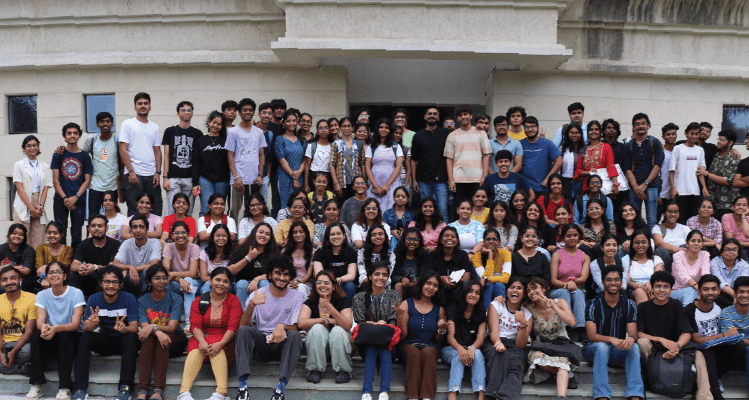On the 24th August 2018, was organized the students visit to Tata International Limited’s leather factory at Dewas. From the minute one, it was a great experience and we learnt tonnes of things about the manufacturing and processing of leather.
There are essentially three processes that create leather. Pre-Tanning, Tanning and Post-Tanning. The process that took place in this factory was the post tanning process. We were told by the Tata authorities about the kind of animal which is required to make this leather. They do not use goat or sheep skin because their skin area is too small, and the area affected by wounds also had to be cut out and hence is not usable. They also informed us about the strict protocols in practice for not using the skin of dead animals because the bacteria formation after the death can be carcinogenic at times. The initial stage of making leather takes place in slaughter houses. When the meat is extracted, the skin is also slated and preserved. Hence, the processes are regulated to the dot.
After understanding the stage of pre-tanning, we saw the place where they stored the wet blue buff. This wet blue buff was soaked in washing agents and chemicals for 8 hours. Post which all this chemical is disposed, and the government is paid for the proper disposal of this waste. It is ensured that not even a single drop of this chemical is left indisposed or mishandled.
There is then the process of sammying for flattening the leather and splitting to divide the leather into grain side and split side. Succeeding this was the shaving process where the final thickness of the leather was maintained. There were huge drums for dying this leather and it took around 8 hours with the entire dying and aging process. The leather was then flattened, and vacuum machines were used to suck all the water out. After this, the wet toggle machine was used to stretch the leather. Post which was the process of applying various coats of colour where the base coat and the top three coats were extremely essential for the maintaining the quality of the same. Print rollers gave different textures as per the order. We were really fascinated to see how all these procedures are done.
We noted that a lot of human effort was required for these procedures. We also noticed that the factory was extremely clean. We could understand that they valued ethics and their safety and security the most. Maintaining such a clean working environment that includes the efforts of the staff and employees is commendable.
They have been creating and supplying leather for mammoth companies like Armani, Hush Puppies, Harley Davidson and many other international brands. They are also the only factory to be supplying leather to the Jeep Compass and will soon be easing more into the side of leather required in automobile industries.
We were told some things that really clicked with us.
These people wanted to make the best out of something that is perceived as wasted. They aim at utilizing everything which is why this industry came into being.
The overall experience helped us understand the limitations and processes involved in designing leather products. This experience is more vital for us as, in product design we strive to find solutions which are effective and wholesome. Some of us have already designed leather products such as shoes, chairs, bags etc. This, on ground know-how of finished leather manufacturing will help us in re-designing them and developing better solutions for the people. Their zero-waste vision helped us in understanding how to be responsible citizens while working towards our mission.
It was a highly enriching experience and made us all even more inquisitive about manufacturing processes in general and designing products in particular.
Written by,
Avantika Kulkarni
Organized by: iConnect Team
